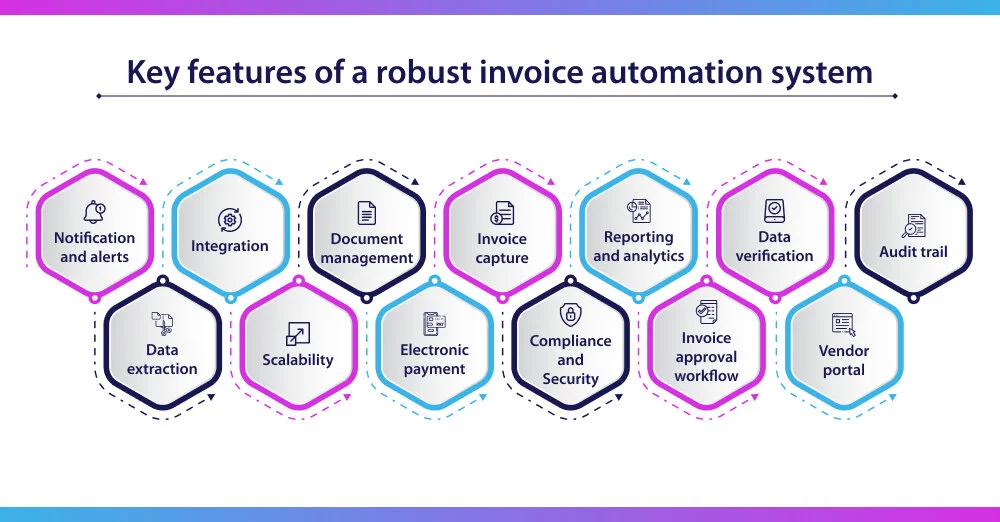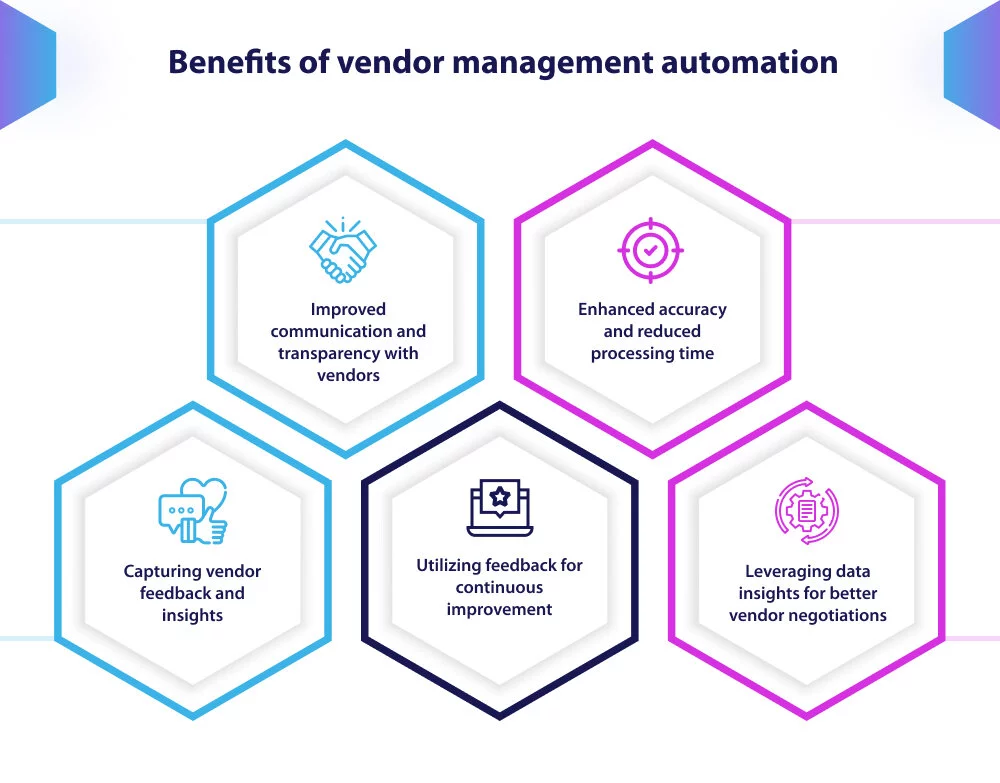Introduction
Vendors are essential stakeholders in any business, providing goods and services critical to meeting specific requirements. Vendor management helps businesses to build and sustain long-term relationships with their suppliers. These relationships foster innovation, streamline issue resolution, and reduce risk. They can evolve into strategic partnerships, creating networking opportunities and a competitive edge. Long-term stability and mutual benefits make strong vendor relationships vital for business success.
Therefore, streamlining vendor relationships and vendor management is crucial for businesses. However, the process of managing vendors can be a daunting task, especially when it comes to vendor onboarding, communications, and payments. This is where Purchase invoice automation or vendor management solutions provide a better experience for businesses and vendors.
Purchase invoice automation or vendor management solutions revolutionize vendor management. It boosts efficiency, accuracy, and timeliness in processing invoices, enhancing trust and satisfaction. The real-time visibility and compliance features benefit both parties, while cost savings and data analysis strengthen vendor relationships. Communication is streamlined, and scalability supports business growth. In essence, purchase invoice automation streamlines operations, making vendor management more efficient and effective.
The Basics of Purchase Invoice Automation
Now let’s have a look at what purchase invoice automation is and its features and functionalities:
Definition
Purchase invoice automation is a process in which technology and software are used to streamline and simplify the handling of purchase invoices within a business or organization. It typically involves capturing and extracting of invoice data, validation and verification of data, approval workflow, integration with ERP, payment processing, reporting, and analytics.
Key features and functionalities of a robust invoice automation system
The key features of a robust invoice automation system that can streamline vendor relationships are as follows:
- Invoice capture: Automated capture of invoices from various sources such as PDF, captured image, or any other format.
- Data extraction: Extraction of essential invoice data such as vendor information, invoice number, date, and line items, using IDP and data extraction technology.
- Data verification: Validation check to ensure accuracy and compliance with company policies and regulations.

- Invoice approval workflow: Configurable workflow to route invoices to the appropriate personnel for review and authorization, often with multi-level approval capabilities.
- Electronic payment: Ability to initiate electronic payment directly from the system.
- Notification and alerts: Automated notifications and reminders to keep stakeholders informed about pending approvals or payment due dates.
- Integration: Integration with RP systems to update financial records and eliminate manual data entry.
- Document management: Secure storage and retrieval of invoice documents for auditing and reference.
- Vendor portal: A portal for vendors to submit invoices, track the invoice status, and communicate with the accounts payable department.
- Reporting and analytics: Purchase invoices have a critical role in financial reporting; therefore the tools for such reporting have to be accurate. Reporting tools generate insights into spending patterns, vendor performance, and other financial metrics.
- Compliance and Security: Features to ensure compliance with financial regulations, data security, encryption, and access control.
- Audit trail: Detailed audit trail to track all actions and changes related to invoices for accountability and transparency.
- Scalability: Ability to handle a growing volume of invoices as the business expands.
Challenges in Traditional Vendor Management
- Many traditional vendor management systems rely on manual processes for tasks like vendor onboarding, performance evaluation, and contract management. This can be time-consuming and error-prone.
- Manual vendor onboarding processes can result in delays in adding new vendors to the systems, potentially affecting operations.
- Vendor information is often stored in disparate systems or spreadsheets, leading to data silos that hinder collaboration and decision-making.
- Traditional systems often lack real-time data and analytics, making it difficult to gain insights into vendor performance and risk.
- Vendor compliance with regulation and contractual agreements can be challenging without automated tracking and alerts.
- Communication with vendors may be fragmented, leading to delays, misunderstandings, and disputes.
- Manual processing can have high administrative costs and potential cost overruns.
- Storing vendor data in various formats and locations may increase the risk of data breaches and compromise sensitive information.
- Further traditional vendor management systems may not be scalable to handle increased transactions.
All such issues may adversely affect the relationship with the vendors which is not good for any business as it will create loss in terms of great deals and discounts by vendor. Further, the trust and credibility of the businesses will also be affected.
To overcome the challenges of traditional vendor management systems and to streamline vendor relationships it is inevitable to adopt digitization and implement automation. Automation in vendor management can provide a lot of benefits to the organization. Let’s have a brief overview of the benefits.
Benefits of vendor management Automation

1. Enhanced accuracy and reduced processing time- Automation minimizes human error, ensuring accurate and up-to-date vendor information. It streamlines processes, reducing manual tasks and paperwork and saving time and resources.
2. Improved communication and transparency with vendors: Automated systems provide real-time access to data, allowing both parties to view the same information simultaneously. Vendors can also access the vendor portal to find essential information and communicate in case of any query or doubt.
3. Leveraging data insights for better vendor negotiations: Data helps to evaluate a vendor’s historical performance, enabling businesses to identify strengths and weaknesses. Further, it analyzes past expenditures, tracks cost trends, and compares pricing against market benchmarks.
By analyzing potential vendor risks such as delivery delays or quality issues. Further data insight helps in tailoring contracts to specific needs. This can help negotiate with vendors to align with unique requirements, leading to cost savings and improved performance.
4. Capturing vendor feedback and insights: Capturing vendor feedback for effective vendor management is crucial for building strong partnerships and improving performance. Vendor feedback provides insights into their performance. It allows us to address issues and concerns promptly and help maintain product or service quality. To get proper feedback establish communication channels like e-mails, meetings, calls, etc., regular check-ins, vendor surveys, feedback forms, online portal, key performance indicators, vendor scorecards, regular reviews, anonymous feedback options, etc.
5. Utilizing feedback for continuous improvement: Utilizing vendor feedback for continuous improvement is a strategic approach to enhance your organization’s operation and vendor relationship. Thoroughly analyze the feedback data to identify trends, common issues, and areas for improvement. Patterns and recurring problems can be analyzed. The feedback can be prioritized based on its impact on the operations, cost savings potential, or its alignment with strategic goals.
A specific action plan can be created to address the issues identified in feedback and the plan should include clear goals, responsible parties, and timelines. Further, open communication with the vendors about the steps to be taken to address the feedback can help to improve the plan and finally execute the action plans and make the necessary changes in processes, procedures, or vendor relationships.
Selecting the Right Vendor Management Solution
Selecting the right vendor management solution is vital for optimizing supply chain and vendor relationships. To make an informed choice, businesses should assess their unique requirement, consider the software’s scalability and compatibility, examine the vendor’s track record and customer support, and evaluate the total cost of ownership. A well-informed decision in selecting a vendor management solution can lead to improved efficiency, cost
Summary: Empowering Vendor Relationships through Automation
Empowering vendor relationships through automation is a strategic approach that optimizes collaboration and efficiency. By automating vendor management processes such as purchase orders, invoice handling, and communication, businesses can enhance transparency, reduce errors, and foster trust with their vendors. This not only streamlines operations but also creates a foundation for stronger, more productive partnerships, ultimately benefiting both parties involved.










